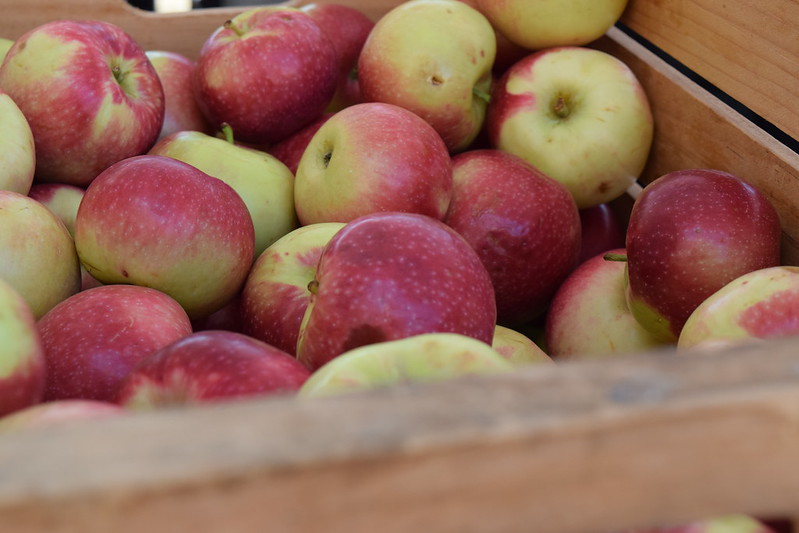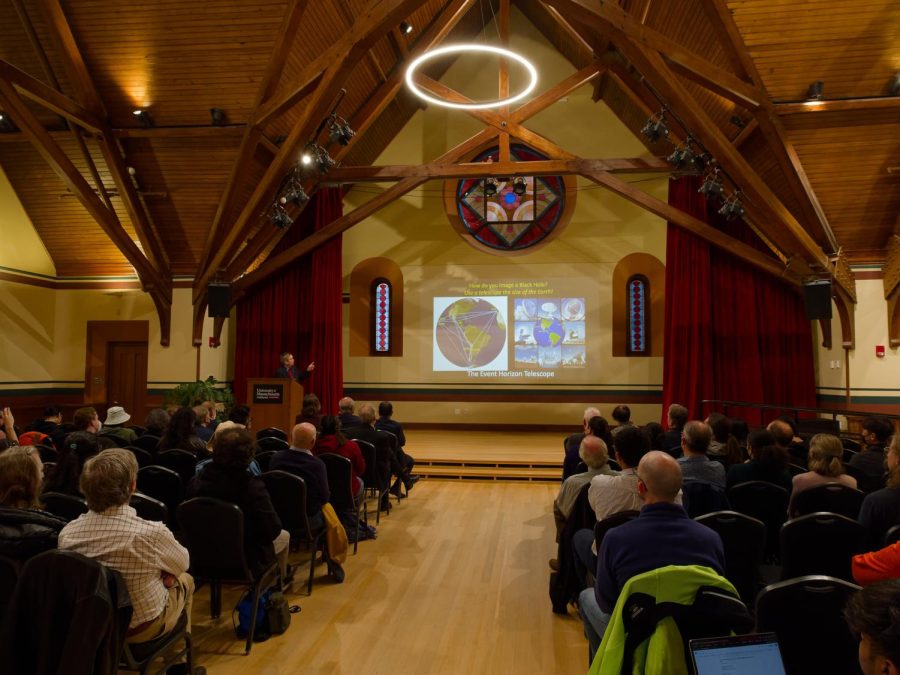The history of local procurement at UMass Dining
You don’t need to travel far from the University of Massachusetts to find farmland. Ken Toong realized this after arriving at the University as dining director in 1998. Toong’s vision was to source healthy food locally by changing the institution’s food service model.
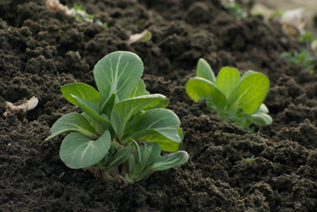
Coinciding with the start of the Farm to School movement during the early 2000s, Toong’s idea was experimental for a school of UMass’ size. Translating the traditionally relationship-based practices of local food purchase was a question of scale. With scale came the question of sustainability.
With the largest food service program in the country, UMass’ relationship with food tells a story about sustainability when institutionalized, where every day decision-making carries just as much gravity as macro-level investments towards sustainable operations and traceable local procurement.
At the student level, a marker of choice and intention is reflected less so in what is eaten, but where food is eaten. Some of these choices are not one’s students can make themselves. For the more than 14,000 students who live in University residential halls, purchasing a meal plan is required.
But at UMass, a land-grant university with agricultural beginnings far from historical obscurity, there are efforts to instill practices of engagement with food, tethered to campus culture.
Toong, now director of UMass Auxiliary Enterprises, focuses on where the University is situated to tackle these goals. Specifically, in relation to the Connecticut River Valley region, where more than 120,000 acres of agricultural land is located.
With a dedicated sustainability team working with culinary, purchasing and marketing, this collaboration allows the program to sell and tell the story of local sourcing. The story starts on a farm less than two miles from campus, where a purchase of butternut squash began the program’s local dining project.
Carrot fields in view of Lederle Tower: UMass Dining and the local farm
Joe Czajkowski is a third-generation farmer in Hadley. Czajkowski partners with smaller farms around the area, operating as a produce aggregate. After initiating their local procurement efforts with Czajkowski, UMass Dining was the farm’s first anchor customer.
This business model captures the shifts in farm-to-institution relationships and UMass Dining’s sourcing networks. As UMass Dining’s largest local produce vendor, Czajkowski estimates selling half a million pounds of produce to the program this year.
Though Czajkowski Farm grew alongside the dining program, it is important to note how his operation is situated within a larger history of agrarian activity in the Pioneer Valley. Campus proximity to family-owned and non-industrial farms strengthened a sense of regional familiarity, opening new opportunities for smaller farms to expand their reach.
“There was a paradigm shift on people wanting to buy local,” Czajkowski said. “And this is a great area for that.”
Knowing who grows the food you eat is just as critical as knowing where it comes from. This idea became the focus of UMass Dining’s efforts to empower students to think critically about their everyday dietary choices.
“It’s so important for us in the college and university sector. We need to advocate how important food is to our students,” Toong said.
As reported by MassLive, seven percent of all food served in the dining halls in 2004 was sourced locally. In 2013, the program committed to its largest local procurement goal to date on the “Real Food Challenge.” UMass became one of the largest institutions to join a nationwide campaign to serve at least 20 percent local or sustainable fair-trade food by 2020.
In a benchmark report published by the Farm to Institution New England (FINE) network in 2015, over 95 percent of New England colleges and universities purchased local food for their dining programs. On average, colleges and universities spent over one-fifth of their annual food budgets on local food in 2015. Metrics such as these are considerably recent research areas that show institutional interest in local sourcing.

Tania Taranovski, Director of Programs at FINE, explains the challenges of a college or university to balance the “public facing” element of their purchasing power with research and education. UMass Dining began to work with FINE in 2015 to address ways institutions could pursue local procurement at scale. Taranovski and the FINE team work on logistical concepts that institutions, food distributors and producers run into—bridging the gaps between individual goals and outcome.
Some of these ideas, Taranovski says, apply to the institution itself, and what it means for a university to value and invest in local partnerships.
“The influence that institutions have on the individuals they serve is pretty large compared to what a grocery store might have, or a farmers market that might only be a small fraction of what an individual eats,” Taranovski said. “If you’re a student going to a school, your choice is limited to what that institution provides.”
In the 20 years since local procurement first began at UMass Dining, it matters that local food is now a norm within the campus dining experience. Connecting students to the source of their food is an attempt to highlight the human role in food cultivation, harvest and preparation.
But these same conversations are influenced by the challenges that affect the land where food is grown. As global climate change continues to worsen, local farms are not exempt from its repercussions.
The impact of climate change on Pioneer Valley farmers
Loam soil along the Connecticut River Valley is highly regarded for its fertility. Generations of flooding deposited layers of silt, sand and clay–strengthened by organic matter content over time. The earliest floodplain communities were Indigenous groups, who cultivated the land and influenced the region’s ecological characteristics.
The historical impact of flooding on the valley is hard to overstate. With climate change, these impacts are worsening.
Scientists documenting changing rainfall patterns across New England predict more intense and more frequent flooding due to climate change. Severe rain from a storm system this past July caused catastrophic flooding across the northeast. According to the Massachusetts Department of Agricultural Resources (MDAR), an estimated 15,400 acres of farmland in western Massachusetts and Vermont were damaged during this storm.
Czajkowski Farm lost nearly 17 acres of carrots, also taking major losses in zucchini, pumpkin and parsnip. While later-season vegetables like brussels sprouts and broccoli could recover, Czajkowski wonders about the future of floodplain farming.
On a farm of his scale, Czajkowski says his losses were not detrimental. But in a reality where crop loss from flooding is increasingly common, building resilience is no longer a goal, but a necessity.
Dr. Christine Hatch is a Umass Extension Professor in the Department of Earth, Geographic and Climate Sciences. She says the scale of damage seen from July was reminiscent of Tropical Storm Irene in 2011. This summer however, tropical activity was not to blame. Wetter-than-normal conditions were prevalent throughout the state in July, and particularly in western Massachusetts that aggravated flooding.
Surpassing 13 inches of rain in total, Franklin County received the most precipitation in the entire state for the month of July according to the National Weather Service. Second place was taken by Hampshire County, receiving 11.75 inches of rain.
According to the Massachusetts Climate Change Clearinghouse, the average monthly rainfall for all regions of the state is between three to four inches. For perspective, Hurricane Irene brought more than ten inches of rain upon landfall—the average amount seen over all of western Massachusetts.
“The hydrologic cycle is intensified under climate change,” Dr. Hatch said. “When rain comes, it’s not that half-inch gentle sprinkle that [farmers] want. That’s not what we’re getting anymore.”
The drench in July did not mediate concurrently hot temperatures. Continuing a staggering trend, July was the second-warmest July ever recorded in state history.
As a hydrogeologist, Dr. Hatch’s expertise lies where water resources and climate change intersect. How water interacts with the land makes the hydrologic cycle an essential study of movement. The most recent report released by the International Panel on Climate Change indicates that rising global temperatures allow more water to evaporate, which increases the amount of moisture in the atmosphere.
Warmer air has greater capacity to hold water vapor, which in turn leads to heavier precipitation where storm clouds form. And with every degree of warming in the atmosphere, atmospheric water vapor increases by seven percent.

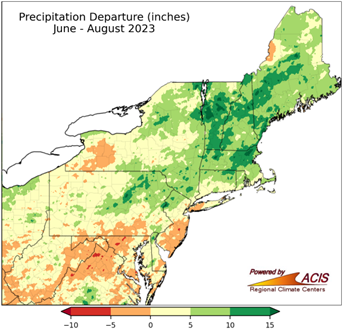
Intensified precipitation due to rising temperatures is not the only challenge floodplain farmers face. Groundwater levels are also expected to rise due to climate change. Groundwater is located below the ground surface and found in formations called aquifers. When precipitation falls, some saturate the pores in soil or rock.
A 2011 study by UMass student Kaitlyn Weider examined the response of water table levels alongside climate data from 1940 to 2010 in New England. Groundwater systems, according to Weider, often “moderate climate variability,” and “[act] as a lowpass filter.” Data on groundwater anomalies suggests that these abnormalities are amplified when compared against temperature and precipitation. The study finds a relationship between groundwater levels and climate variables, indicating aquifer sensitivity to climate deviation.
“The temperature, precipitation, streamflow and groundwater anomalies show a statistically significant increasing trend over time that is more pronounced in the last ten years,” Weider wrote in her report. “These higher water tables could lead to increased streamflow and higher probability for increased risks to flooding in the New England region.”

As the outreach unit of the Center for Agriculture, Food and Environment, UMass Extension works with farms and communities in Massachusetts to provide educational resources. In conversations with floodplain farmers, Dr. Hatch says the impacts to groundwater are not as readily acknowledged in discussions of climate-related water resource vulnerability.
Studies from UMass Hydrogeology examine evidence of rising groundwater levels for the majority of Massachusetts and New England at large. With funding from the MA Hazard Mitigation and Climate Adaptation Plan, the team will map the modern water table depth across the state and make predictions on the impacts and likelihood of future groundwater rise.
For farmers, Dr. Hatch identifies two areas of concern. While the periodic risk of flooding from the Connecticut River is a constant for floodplain agriculture, groundwater is a stealthier threat.
“You’ll still have flooding [from the river], and you’ll have times like this July that nobody can do anything about,” Dr. Hatch said. “But the bigger risk is from the groundwater, as it comes up. What kinds of crops can withstand that much moisture in the root zone?”
Human hydrologic alteration makes the Connecticut River well-researched and well-maintained. With 65 major dams along the river and its tributaries, the questions Dr. Hatch poses are also questions of resource management. But with short and long-term fluctuations in rainfall recharge, river and ocean levels due to climate change, both scientists and farmers reckon with the limits of the hydrologic system.

A changing hydrologic cycle
Just ten miles north of Czajkowski Farm is Atlas Farm in Deerfield. Owner Gideon Porth believes the flooding from this past summer made 2023 one of the wettest production years in the history of the farm. Though his land adjacent to the Connecticut River was not directly flooded, low-lying land was susceptible to accumulated rainfall. As a result, Porth estimated a 35 percent total production loss, with fall root crops, leafy greens and zucchini taking the hardest hit.
But how exactly does excessive rainfall impact crop health? One way is water contact with plant foliage. As defined by the US Department of Agriculture (USDA), leaf wetness duration on vegetation surfaces is often a precursor to bacterial, fungal and water mold diseases which thrive in moist conditions.
Though heavy precipitation has followed an upward trend in the contiguous US since the 1950s, data from the Fifth National Climate Assessment shows that this increase is largely attributed to more “frequent precipitation extremes.” These extremes are recorded through the number of extreme precipitation days as well as the maximum daily precipitation.
Rosendo Santizo of Winter Moon Roots says his farm was also impacted by plant leaf diseases, in addition to crop loss from root rot. Winter Moon Roots is a key supplier of root vegetables such as red beets, watermelon radish and carrots—all of which are harvested late in the season and stored naturally in winter temperatures.
Given the high sensitivity of agriculture to short-term weather variability and long-term atmospheric changes in climate, these changes are different regionally. In Massachusetts, where direct rainfall is increasing with climate change, over-saturated soil will extend leaf wetness duration beyond overhead precipitation alone.
“Wetness is probably the number one biggest aggravating factor for diseases,” Porth said. “Almost every crop group that we grow had elevated disease pressure this year.”

One disease is downy mildew, which commonly targets lettuce grown in cooler environments such as Massachusetts. Lower temperatures are prime for infection, and effects compound with extended leaf wetness due to overnight dew formation.
Even farmers who utilize covered structures are not immune against the threats of disease aggravated by extreme weather. For Danya Tietelbaum of Queen’s Greens, environmental control strategies are a crucial defense against the spread of downy mildew.
Known as high tunnels, Tietelbaum’s metal structures are fitted with plastic sheeting to cover the soil below—allowing specialization in leafy green production during an extended growing season in the winter. Completely off-grid, Queen’s Greens relies on passive solar radiation for heat and natural ventilation.
Controlled growing environments like these are different from open field conditions. While crops are protected from precipitation, the design of high tunnels can affect agricultural productivity. Under a tunnel environment, the absence of wind causes higher rates of evaporation, increasing humidity. Without exposure to outside precipitation, excess irrigation can increase humidity levels and lead to disease vulnerability.
The most pressing climate challenge in a controlled growing environment is the influx of moisture caused by severe precipitation. Tietelbaum echoes Porth’s concerns about changing crop resilience to disease.
“As we get warmer and wetter, we are better hosts for diseases we used to be too cold for,” Tietelbaum said.
One of the most pressing concerns for climate change in New England is warming winter temperatures. In addition to increasing precipitation across the board, the milder winters Tietelbaum and Porth are troubled with are more common for New England as a region and have already begun to take shape in Massachusetts. The statewide average temperature taken between December 2022 to February 2023 was 33.6 F. This was the second-warmest meteorological winter on record.
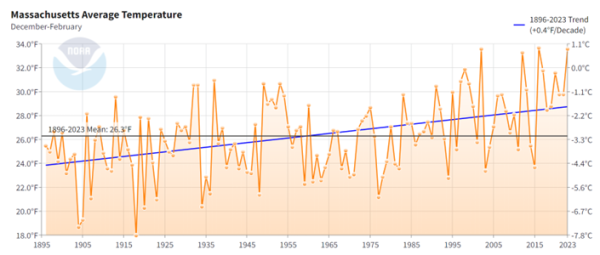
Certain types of plants are affected more than others in warming winters. Stressing an outsized impact on fruit growers, Porth says strawberries are one example of a perennial crop that undergoes a period of acclimatization to the cold. Applicable to all perennial crops with the cold “hardiness” to survive winter, Porth explains how these dormancy periods are changing due to temperature fluctuation.
“We’ve seen that with strawberries where we’ll get a big warm-up in the very late winter, enough to where they’ll start growing or flowering, and then get very susceptible to an early season freeze [by the fall fruiting cycle],” Porth said.
As Porth and Tietelbaum grapple with compounding climate extremes, understanding potential crop loss in the future is difficult because long-term strategies differ across farm production goals.
Soil health as the foundation for climate resilience
Central to these challenges, however, is soil health, and the role healthy soil can play in plant disease suppression. Unlike ventilation and irrigation strategies, soil health takes considerable time to improve. But this sort of investment provides long-term benefits to crop stability, particularly under a changing climate. Heavy rainfall poses severe implications for soil nutrient retention.
“Excessive rainfall leeches a lot of nutrients out of the soil,” Porth said. “Nitrogen in particular is very mobile in the soil. [With] consistent big rain events, it’s literally just washing those nutrients out of the soil. It’s very difficult to reapply [fertilizer] especially when a crop is, say, two-thirds of the way through its production.”
Dr. Masoud Hashemi is a UMass Extension Professor in the Stockbridge School of Agriculture. He works with farmers to help them better care for the land and the complexity of life it can support. Hashemi says soil health is dependent not on what grows above, but the life that exists below.
“The reason the soil is nutrient-dense is primarily due to its organic matter content rather than anything else,” Dr. Hashemi said. “The higher the organic matter, the more nutrient dense the soil might be.”
Organic matter is crucial for microbial sustenance. Soil microbes play a crucial role in recycling nutrients at the end of their short lifespan. To promote healthy crop development, nutrients like phosphorus, potassium and nitrogen should be present in the soil.
For natural soil fertility, this foundation minimizes the use of fertilizer or artificial soil amendments. While the stability of loam soil comes from the balanced ratio of clay, loam and sand, Dr. Hashemi emphasizes that soil maintenance is every farmer’s responsibility. How farmers treat their land while fields are not in production can severely change the overall health of their soil.
Dual-use cover cropping to maximize benefits for soil health

In New England, this means maximizing the time that fields rest in winter by growing cover crops to protect bare soil. As one of Dr. Hashemi’s primary research areas, he is enthusiastic about the rise in cover cropping over the past decade. According to the USDA, cover cropping increased by 50 percent between 2012 and 2017.
“Cover crops support the soil microbes, so the population of the soil microbial community goes up,” Dr. Hashemi said. “The cover crop, by different means, increases the soil organic matter and therefore contributes to the soil fertility.”
By definition, any crop is a cover crop if not grown for profit as a cash crop. However, different cover crops will have different nutrient capture capabilities before being lost to the environment. Crops like annual ryegrass are effective at combating compacted soil, which occurs when soil particles are compressed and there is reduced pore space for air and water. With a shallow root system, annual ryegrass accesses nitrogen even in compacted soil.
Conversely, crops like daikon radish have tap roots that can reach up to six feet. These deep-rooted cover crops create channels in the soil which increase absorption of intense rainfall while capturing more nutrients. To choose the correct cover crops, Dr. Hashemi suggests farmers develop a ratio of crops which provide specific, but mixed benefits.
“The mixed cover crop is much better than monoculture because each crop has its own agro-ecological benefit,” Dr. Hashemi said. “Each one supports a specific group of microbes in the microbial community.”
Julia Zheku, a biology and horticultural science major, is a student farmer with the UMass Student Farm Enterprise. Helping manage a 20-acre certified organic vegetable farm, Zheku works with 13 other students. Their produce is distributed to the dining halls and to community supported agriculture (CSA) shares among other locations. Zheku and the student farmers practice cover cropping and crop rotation.
“When it’s still warm and the crop is still growing, you can interseed cover crops in the beds so that when you get rid of the [cash crop], there’s still some type of cover crop in the field so that it doesn’t lead to as much soil erosion,” Zheku said.
Cover cropping, along with a no-till system where farmers leave soil undisturbed after harvest, increases water retention. Minimal soil disturbance preserves soil structure, which should contain pores that allow water to move downward. For flood-prone agricultural regions like the Connecticut River Valley, water from extreme precipitation must be able to travel through soil channels, instead of causing erosion through runoff.
“[With no-till], because you didn’t disturb the soil, you didn’t break those channels,” Dr. Hashemi said. “In that [kind of] flood, most of that water could penetrate into that zone within a fraction of a second.”
At Atlas Farm, most cover cropping happens over the winter months. That made the summer rain a greater test after Porth’s fields were plowed and prepared for planting, but the soil was not protected to avoid erosion.
Operating a 120-acre USDA-certified organic farm, mechanized farms like Porth’s work extra hard to reduce their tillage. In partnership with the American Farmland Trust, Atlas Farm began a second year of minimum-till experimentation with kale, while cover cropping with oats, peas and buckwheat.
“We’re seeing good signs of progress,” Porth said. “I’m very intrigued about this initiative with reduced tillage. I think that could dramatically change things from a sustainability standpoint for my farm.”
With increasing precipitation events, Porth is forced to work the soil while wet or use machinery to salvage crops before a field is completely dry.
“Say we’re going to go in and harvest with a tractor … when we should let the field dry out, but we’ve got another big storm coming in tomorrow,” Porth said, adding “That can lead to compaction over time.”
USDA research shows how consistent cover cropping can increase climate resilience. But cover cropping is not a new technique. Dr. Hashemi, Dr. Hatch, and their extension colleagues increase access to information that guide farmers towards actionable and realistic practices.
These practices are cultural practices most of all—practices which challenge farmers in opposite directions from industrialized operations which transformed modern agriculture and are still the systems which deliver most food to our tables today. The interconnected benefits of soil health protection create revolving advantages which offset the impact farming itself has on the climate.
“When you’re not disturbing the soil, the carbon dioxide will stay in the soil,” Dr. Hashemi said. “[With cover cropping], we are fighting climate change as well. It’s not just the soil, it’s not just the soil fertility, it’s not just the flooding—but also globally, you’re fighting with this issue [of climate change].”
Where consumers are not always conscious of the specific practices that support healthy agricultural systems, a productive dialogue of everyday climate action can exist when a network of farmers, scientists, policymakers and communities each have a stake in the ground.
Catharine Li can be reached at [email protected] and followed on X/Twitter @catharinexli.
















